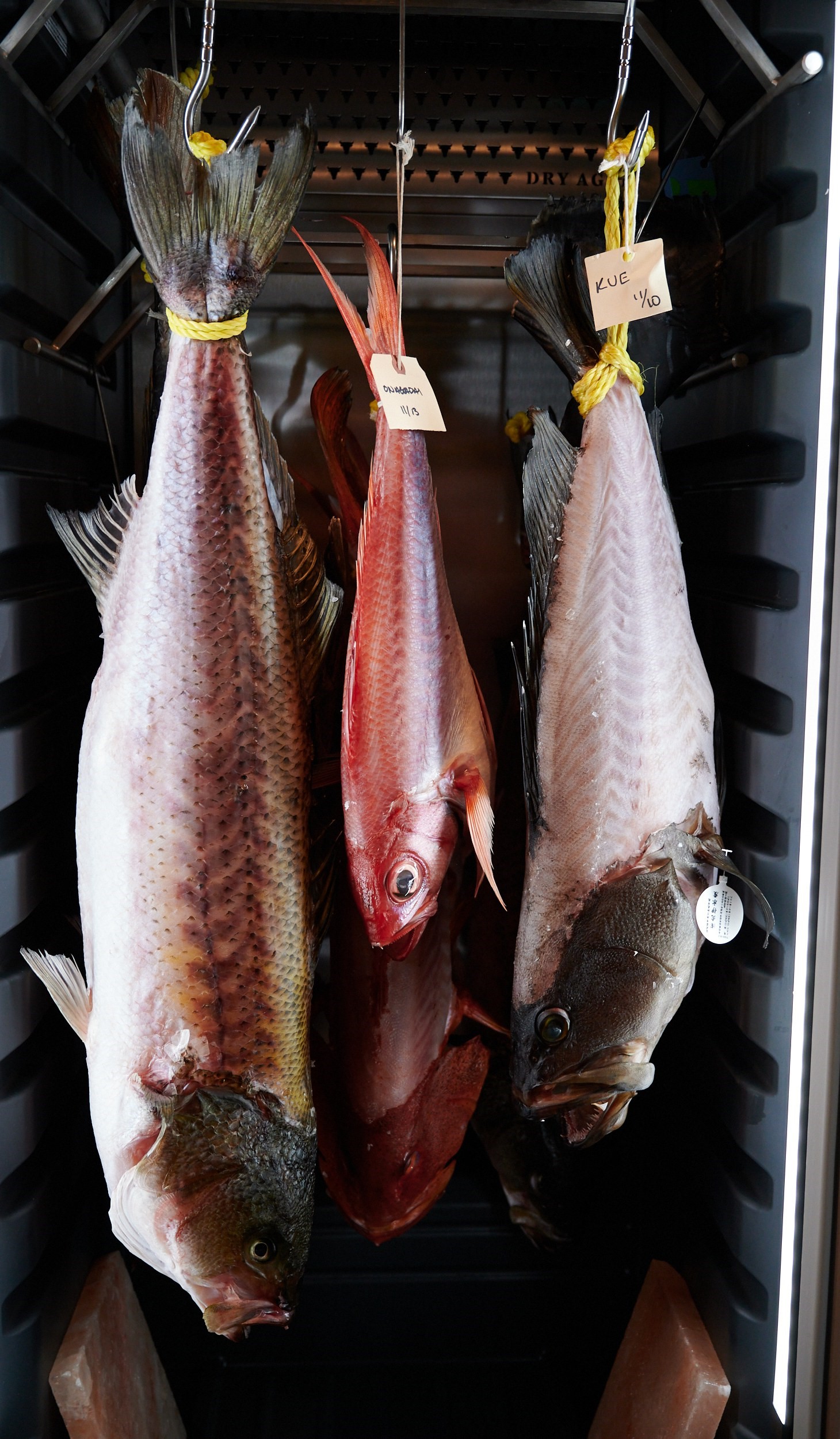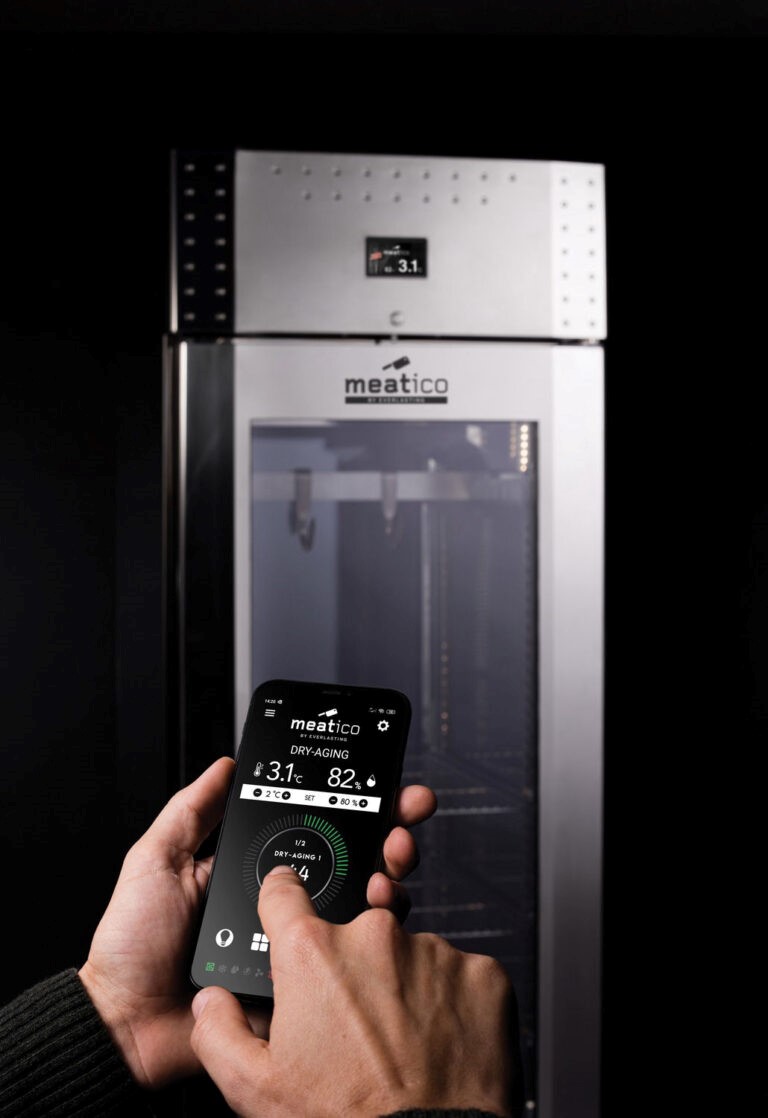The new frontier of fish dry aging: are we sure fresh fish is still the best dish to order? – Fish dry aging technique is becoming increasingly famous in the fish cooking world.
Indeed, while dry aging meat is a renowned tradition since centuries (storing meat in controlled conditions to enhance flavour and tenderness), dry aging fish is much more recent and still complicated to be processed due to strict protocols to be followed and complex procedures to be ensure, that make fish more elaborated to be dry aged instead of meat.
Freshness is typically associated with fish that has been recently caught and properly handled to maintain its quality, what is dry aging precisely?
Dry aging is a process that enables the enzymes present in the tissue of the animal (meat or fish) to be released and relax them. It means that the proteins that are present in the muscles are broken down, giving to the meat or fish more taste.
Dry aged fish is not dried actually: it keeps the same characteristics as fresh fish; however, the consistency of the tissue is more concentrated as well as the taste.
Dry aging means actually “to mature”, so to create the ideal conditions for the raw fish to reach the best quality in terms of texture and taste, by undergoing a specific and complex process. Indeed, fish dry aging requires the fish to be extremely fresh before the expulsion of the innards, and the subsequent hanging of the fish in the dry aging chambers. During the first phase of the fish dry aging, glucose accumulates in the tissues and taste is refined. However, for this phase to happen successfully, it is necessary for the fish to be fished and dispatched without altering the tissues and with no stress. The second phase of dry aging occurs organically, since the liquids of the fish are drowned in apposite chambers, according to different dry aging processes.
The dry aging technique brings a huge innovation in the fish cooking world. Indeed, while in some countries fresh fish is considered as the daintiest kind of fish, dry aged fish is demonstrating that serving fish fresh is not always the best alternative. Especially in countries like Italy, people are used to ask for the freshest fish in the fish market stands. However, experience and research in cooking are demonstrating that for some kind of fish dry aging adds much more qualitative value. To give an example, the grouper fights bravely while being hunted. Due to this, when served fresh the muscles are still contracted by the stress and the consistency of the fish meat results tough.
Dry aging is revolutionising common beliefs around the traditions of preparing fish, and it is necessary to detach the concept of quality from freshness to better comprehend how dry aging can bring value to fish products.

Since dry aging fish is very complicated and requires a lot of expertise, new technologies have been developed to support the operators of the agrifood sector in this choice to include dry aged fish in their menu.
Nowadays, high quality fish dry aging fridges exist and these have multiple options to facilitate the dry aging process: the four parameters enabling the dry aging process (temperature, humidity, fan speed, process duration) can be continuously checked through in-app remote control; it is possible to preset recipes and personalise original ones and lastly, automatic anti-germs UVC lamp activates and pops up advice the accordance of the process with HACCP standards.

Surely, these innovation brings added value to the agrifood and catering sector. Dry aging makes the fish last longer, without losing quality and taste. It can ensure improved handling of fish resources, and more sustainable practices. It can be a very interesting investment for agrifood operators who are willing to uplevel the quality of the fish processed in their restaurants, as well as a new frontier for the fish processing techniques and the cooking world.
The new frontier of fish dry aging: are we sure fresh fish is still the best dish to order?









